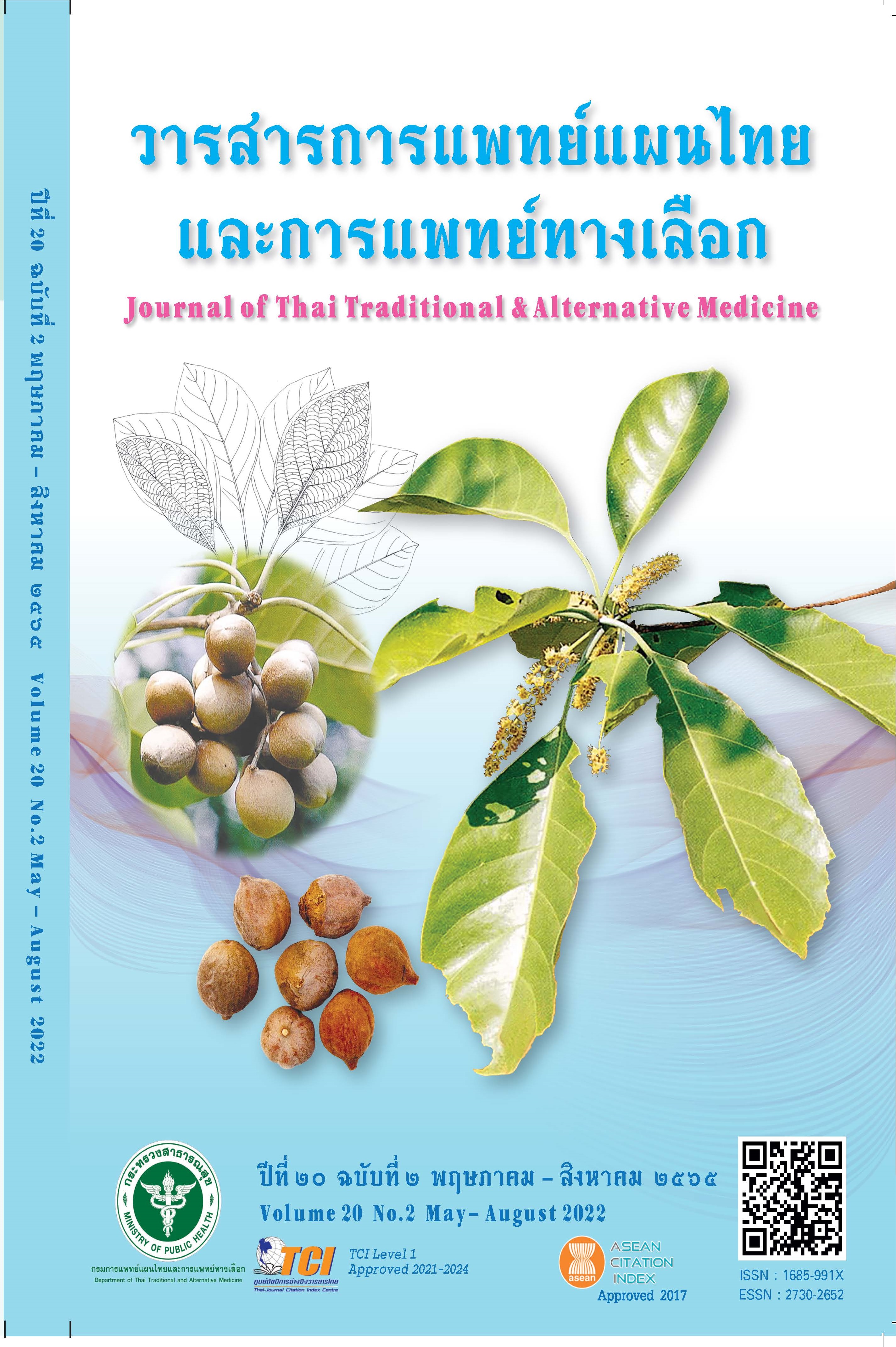Cannabis Therapy from the Perception and Adoption of the People: Case Studies from Village Health Volunteers in U Thong District, Suphan Buri Province
Main Article Content
Abstract
This is a mixed method study aiming to examine (1) perception and adoption of the use of cannabis therapy and (2) correlation between the perception and acceptance of cannabis therapy. The study involved a sample of 370 village health volunteers (VHVs) in U Thong district, Suphan Buri province. Data were collected using a questionnaire and interview, and then analyzed using descriptive statistics as well as Spearman’s rank correlation coefficient. The results showed that the level of perception of cannabis therapy was low (mean = 2.30, SD = 0.58) and the levels of adoption and use of cannabis therapy were moderate (mean and SD = 2.69, 0.66; 2.86, 0.81, respectively). The correlations between the perception, acceptance of cannabis therapy, and the use of cannabis therapy were moderately positive (r = 0.525 and 0.509, respectively). Therefore, to encourage the public to access information and to take advantage of medical cannabis appropriately and extensively, the knowledge and benefits of cannabis therapy should be promoted by spreading comprehensive information through a variety of channels, and cannabis research should be further carried out on various aspects to gain new knowledge that is truly beneficial for the people.
Article Details

This work is licensed under a Creative Commons Attribution-NonCommercial-NoDerivatives 4.0 International License.
References
Picheansoonthon C, Chawalit M, Jeerawong W. Explanation Lord Vishnu texts กdispensary (Pra-Osoth-Pra-Naray) volume celebration 72-year maharajah 5 December B.E. 2542. Type 3. Bangkok: Amarin Printing & Publishing; 2015. (in Thai)
Borgelt L, Franson K, Nussbaum A, Wang G. The pharmacologic and clinical effects of medical cannabis. Pharmacotherapy. 2013;33(2):195-209.
Ruenraroengsak P. Cannabis and therapeutics [Internet]. 2019 [cited 2019 Sep 15]; Available from: https://pharmacy.mahidol.ac.th/th/knowledge/article/453 (in Thai)
Alexander SPH. Therapeutic potential of cannabisrelated drugs. Prog Neuro Bio Psych. 2016;64:157-66. 5. Munson AE, Harris LS, Friedman MA, Dewey WL, Carchman RA. Antineoplastic activity of cannabinoids. J Natl Cancer Inst. 1975:55:597–602.
Schleider LB, Mechoulam R, Lederman V, Hilou M, Lencovsky O, Betzalel O, et al. Prospective analysis of safety
and efficacy of medical cannabis in a large unselected population of patients with cancer. Eur J Intern Med. 2018;49:37-43.
World Health Organization. The health and social effects of nonmedical cannabis use. Geneva: WHO; 2016.
Department of Medical Services, Ministry of Public Health. Guidance on cannabis for Medical Use. 4th Revision. 2021. p.12-3.
Daniel WW. Biostatistics: basic concepts and methodology for the health sciences. (9’ed). New York: John Wiley & Sons; 2010.
Best JW. Research is Evaluation. 3rd ed. Englewood cliffs, New Jersey: Prentice-Hall; 1977.
Hinkle DE, William W, Stephen GJ. Applied statistics for the behavior sciences. 4th ed. New York: Houghton Mifflin; 1998.
Jirapa S. Public attitudes affect the use of “cannabis” economic plants In the treatment of cancer in Sa Kaeo
province [Internet]. 2021 [cited 2021 Dec 14]; Available from: http://www.ba-abstract.ru.ac.th/Abstract-Pdf/2562-5-10_1599043433.pdf (in Thai)


